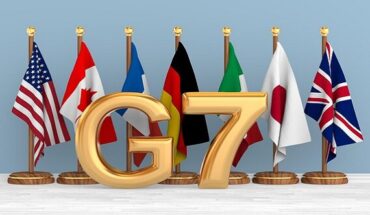China: China’s GDP grew by 4.9 per cent in the third quarter, down from 7.9 per cent in the second, confirming the slowdown of the world’s second-largest economy which was under pressure from the crisis-hit property sector, curbs on energy and tardy recovery from the COVID-19 pandemic.
Early to recover from the coronavirus pandemic, China’s economy in the first few months this year staged impressive recovery but caught up in numerous headwinds, including a property sector slump, power crisis, increasingly weak consumer sentiment and soaring raw material costs.
Its Gross Domestic Product (GDP) in the third quarter (Q3) grew 4.9 per cent year on year, slower than the growth of 18.3 per cent in Q1 and 7.9 per cent in Q2. The Q3 belied surveys of predicting five per cent growth.
Releasing the Q3 data, spokesman of the National Bureau of Statics (NBS) Fu Linghui said that consumption contributed around 64.8 per cent to China’s economic growth in the first three quarters of the year.
“We must note that the current uncertainties in the international environment are mounting and the domestic economic recovery is still unstable and uneven,” Fu said.
“The overall national economy maintained the recovery momentum in the first three quarters… however, we must note that the current uncertainties in the international environment are mounting, and the domestic economic recovery is still unstable and uneven,” the Hong Kong-based South China Morning quoted Fu as saying.
According to the official data, China’s retail sales of consumer goods went up 16.4 per cent year on year in the first three quarters this year.
The country’s retail sales of consumer goods totalled around 31.8 trillion yuan (about USD 4.9 trillion) in January-September period as per the data.
China’s value-added industrial output went up 11.8 per cent year on year in the first three quarters, while fixed-asset investment went up 7.3 per cent year on year during the period.
The country’s surveyed urban unemployment rate stood at 4.9 per cent in September, 0.5 percentage points lower than the same period last year.
During the January-September period, China added 10.45 million new urban jobs in the first three quarters, achieving 95 per cent of the target for the whole year, the NBS data showed.
Acknowledging the declining trend of the economy, state-run Global Times in its report on Q3 data said China’s economic slowdown in the third quarter not only came amid a lower base effect from last year when the coronavirus pandemic was largely controlled throughout the country, but also amid a range of economic challenges that China is facing now, such as the power crunch and supply chain issues.
Already, a number of international financial institutions lowered China’s third-quarter GDP growth.
The Standard Chartered bank lowered its prediction for China’s third-quarter GDP from six per cent to five per cent based on factors including flooding and the lingering effect of regulatory tightening.
The Goldman Sachs projected China’s fourth-quarter GDP to grow 3.2 per cent from a year earlier, compared with previous forecast of 4.1 per cent.
The Global Times quoted rating agency Moody’s as stating that China’s electricity cuts will add to the country’s economic stress and weigh on its GDP growth for 2022.
It said that its risks to GDP forecasts could be larger due to disruptions to production and supply chains.
Wu Chaoming, the chief economist at Chasing Securities, told Global Times that China’s third-quarter GDP growth has been weighed down partly by the resurgence of coronavirus in several Chinese provinces, and partly by the rise of bulk commodity price and power supply restrictions, which had a direct negative impact on the profitability of downstream industrial enterprises.
He stressed that the 4.9 per cent GDP growth is still near the potential growth rate of 5.5-6.0 per cent, which means that the country’s economic growth is still within a normal range.
Experts also said that China’s GDP growth in the fourth quarter will face extra pressure, which may further drag down China’s GDP growth for the whole of 2021.
According to Wu, the biggest challenge now comes from the investment sector, as market expectations for the property market are trending down as a result of the banks’ tightening home loan requirements as well as the Evergrande debt crisis.
Evergrande, China’s largest property company, sparked off a major crisis in recent weeks as it began defaulting its payment of instalments of its USD 309 billion debt. Also, several Chinese provinces reported acute power crisis due to shortage of coal.AGENCIES





